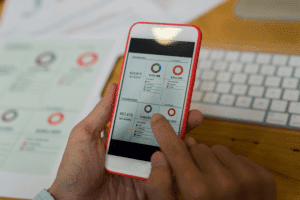
For example, the fee for a consulting service offered by external management consultants is a period cost, but it is not mentioned in any of the categories above. It is a period cost since it is not directly included in the manufacturing process of inventory, and it does not fit in any of the listed titles. They then compared those results to an earlier meta-analysis of ADMs and their efficacy. According to this paper, patients with mesh had an infection rate of 2.6% as opposed to patients with ADM had an infection rate of 5.7%. Overall, it was noted that there was no statistical difference in complications between the methods available [24].
SaaS Financial Model Template
Be prepared to manage these expenses and allocate your resources accordingly. Both product costs and period costs directly affect your balance sheet and income statement, but they are handled in different ways. Product costs are always considered variable costs, as they rise and fall according to production levels. Understanding Period Costs is crucial for any business looking to navigate the complex landscape of financial management. By grasping the distinction between Period Costs and Product Costs, businesses can accurately assess their expenses and make informed decisions to improve profitability.
- Product Costs are essential for calculating the cost of goods sold and determining the gross profit margin of a business.
- Calculating product costs can be a difficult task, especially when it comes to determining the development costs of SaaS.
- If you pay rent for your office and manufacture your products in a separate facility, office rent is a period cost.
- It does, however, exhibit significant complication findings worth mentioning.
- However, due to high cost it cannot be regularly implemented in a developing country like Pakistan.
- However, we’ll cover the most common period costs and how to calculate them.
Administrative Expenses
Indirect allocation requires careful consideration of allocation bases to ensure that costs are allocated fairly and accurately. Common methods of indirect allocation include the use of predetermined overhead rates or activity-based costing (ABC) systems. Direct allocation provides total period cost a simple and transparent way to assign costs to cost objects, making it easier to trace expenses and calculate the true cost of producing goods or services. However, not all Period Costs can be directly allocated, especially those that benefit multiple cost objects simultaneously.
Recap of Period Costs vs Product Costs
Period costs are the expenses that a company incurs during a specific accounting period but aren’t directly related to the product’s development. Understanding the key differences between period costs and product costs is critical for strategic management accounting and decision making. Examples include administrative salaries, marketing, research and development (R&D), etc. These costs are deducted as operating expenses on the income statement. Rent can be recorded as a period cost or a product cost, depending on the purpose of the facility. If you pay rent for your office and manufacture your products in a separate facility, office rent is a period cost.
- If that reporting period is over a fiscal quarter, then the period cost would also be three months.
- Recording product and period costs may also save you some money come tax time, since many of these expenses are fully deductible.
- Direct allocation provides a simple and transparent way to assign costs to cost objects, making it easier to trace expenses and calculate the true cost of producing goods or services.
- The accountant must carefully review the time-related costs and decide whether they should be included in an income statement.
- The articles and research support materials available on this site are educational and are not intended to be investment or tax advice.
For example, if a bakery miscategorized electricity costs as a product cost rather than period cost, it would overstate the breakeven point for selling baked goods – leading to inefficient business choices. Direct Materials include the raw materials and components that go directly into a finished product, such as wood, fabric, electronics, etc. Freight would be considered a period cost if it is paid to ship the finished product to customers.
- Without a project plan or product roadmap, it’s hard to make sure all stakeholders and teams are on the same page.
- Variable costing is a concept used in managerial and cost accounting in which the fixed manufacturing overhead is excluded from the product-cost of production.
- The rent expense is recorded on the income statement each month whether 1,000 units or 10,000 units are manufactured.
- Legal fees, sales commissions and office supplies are considered period costs and should be recorded as expenses on the balance sheet.
- Thus, it is always better to use business logic to identify them by tracing them back to figure out whether they are tied to the manufacturing process of inventories or not.
Period Costs in the Income Statement: Operating Expenses and Net Income
Any manufacturer’s expenses can be either categorized as a product cost or a period cost based on whether it can be directly linked to the production process of inventories or not. Both product costs and period costs may be either fixed or variable in nature. Women aged 18 to 70 years who underwent a pre-pectoral implant-based mastectomy with Polyglactin 910 mesh from January 2016 to June 2021 were included in the study. These women included those treated for breast cancer that underwent either nipple sparing or skin sparing mastectomy and also those who had reconstruction after prophylactic mastectomy in the same setting.

How to Calculate Beginning Inventory & Conversion Costs
Period costs are like the backstage crew ensuring the business show runs smoothly. Remenber, they include things like rent, salaries, and advertising costs? But they’re ongoing expenses necessary for the daily operation of the entire bakery. Operating expenses are the funds a business pays regularly to stay in business – rent, salaries, and advertising costs, to name a few. They play a significant role in shaping the overall profitability of a business because they directly impact how much money it gets to keep after covering all these ongoing expenses.
- As a small business owner, you want to keep this cost low and avoid unnecessary expenses.
- Whether it’s a one-off product or a SaaS subscription, understanding product cost is crucial for any business to succeed.
- Among breast reconstruction treatment options, the use of Acellular Dermal Matrix (ADM) for pre-pectoral breast implant surgery has proven effective with improved cosmetic outcome.
- It was observed that all four patients who developed post-operative complications had a BMI of ≥ 30.0 kg/m2 (p-value 0.053).
- Our writing and editorial staff are a team of experts holding advanced financial designations and have written for most major financial media publications.
- The First-in, First-out (FIFO) costing method solves this by using the costs of the earliest-made products first.

TranZact helps businesses focus on understanding fixed costs using reliable inventory valuation methods. In addition, knowing and managing capacity costs provides a key advantage for companies looking to improve their financial decision-making processes. Period costs, also known as operating expenses, are expenses that are not https://www.bookstime.com/articles/net-sales directly tied to the production of goods or services. Instead, these costs are added over time and charged during a specific accounting period. Period costs are subtracted from the company’s revenue in the period in which they are charged rather than being recorded and allocated to the cost of goods sold (COGS) or inventory.
Related AccountingTools Course

